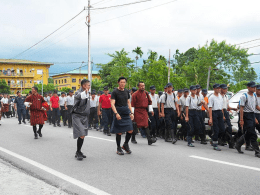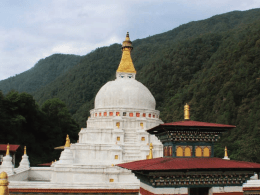High above the tree line, where icy winds whisper across alpine meadows and clouds drift like ghosts between jagged ridges, lies one of Bhutan’s most enigmatic and breathtaking treks — the Dagala Trek, often dubbed the “Trek of a Thousand Lakes”. Hidden between Thimphu and the high mountain passes of southwestern Bhutan, this remote trail offers a rare blend of natural grandeur, cultural legend, and solitude. Far from the bustling world, Dagala is a place where mountains meet myth, and every step tells a story.
The Ancient Path Through Highland Pastures
The Dagala route, though relatively lesser-known today, holds historical significance in the lives of Bhutan’s highland communities. For generations, yak herders from Genekha and Chamgang—villages that form the gateway to the Dagala region—used these high-altitude pastures during summer migrations. These trails were part of old trading and communication routes long before motor roads connected Bhutan’s valleys.
Local people, mainly yak herders and cordyceps collectors, have an intimate knowledge of the terrain. Modern trekkers follow ancient footpaths once etched by hooves and human feet over centuries.
The Myth of a Thousand Lakes
The name “Dagala” loosely translates to “the pass of the Daga people.” The nickname “Land of a Thousand Lakes” stems from local legend. It is said that gods and spirits competed in creating lakes for deities to dwell in. They sculpted shimmering blue basins into mountaintops—serene sanctuaries for guardian deities and water spirits. Many of these lakes are said to remain hidden, visible only to the pure of heart or during spiritual clarity.
There are indeed dozens of visible lakes along the trail, including:
- Utso Tsho
- Relitsho
- Hentsho
- Yutsho
- Jamatsho
Many are believed to be inhabited by lu (serpent spirits), and locals caution against making noise or disrespecting these sacred waters.

Trekking Highlights
- The trek typically lasts five to six days, beginning from Genekha (south of Thimphu).
- It ascends through forests, ridges, and yak herder camps.
- After Labatama Pass, trekkers enter high alpine basins filled with glacial lakes.
- Camping at Utso Tsho provides an amphitheater of peaks and meadows.
- On clear days, views include:
- Jomolhari
- Jichu Drake
- Masang Gang
- Kanchenjunga
- Even the tip of Mount Everest
Cultural experiences include yak herders offering butter tea and dried cheese, and visits to Dala Goenpa, a remote hilltop monastery.
Elevation, Climate, and Vegetation

- Altitude ranges: 2,800 to over 4,500 meters
- Begins in temperate forests: blue pine, rhododendron, oak
- Transitions to alpine zones: dwarf rhododendron, juniper, alpine grasses
- Spring to early summer: blooming rhododendrons, wildflowers, yak pastures
- Wildlife includes Himalayan monal and blood pheasant
- High passes like Pagalabtsa and Labatama require acclimatization
When to Trek
Best seasons:
- Spring (April to early June): Flowers and greenery
- Autumn (late September to November): Clear skies and mountain views
Avoid:
- Monsoon (late June–August): Slippery trails, poor visibility
- Winter: Snow blocks passes and makes camping risky
A Sacred Solitude
More than a scenic hike, the Dagala Trek is a spiritual journey. Lakes are seen as sacred, and the silence of the mountains whispers of ancient myths, meditative lamas, and spiritual stories etched into the highlands. For both nature lovers and spiritual seekers, the Dagala Trek offers a rare, poetic experience in Bhutan’s pristine wilderness.








